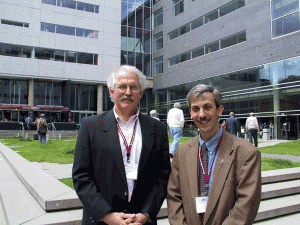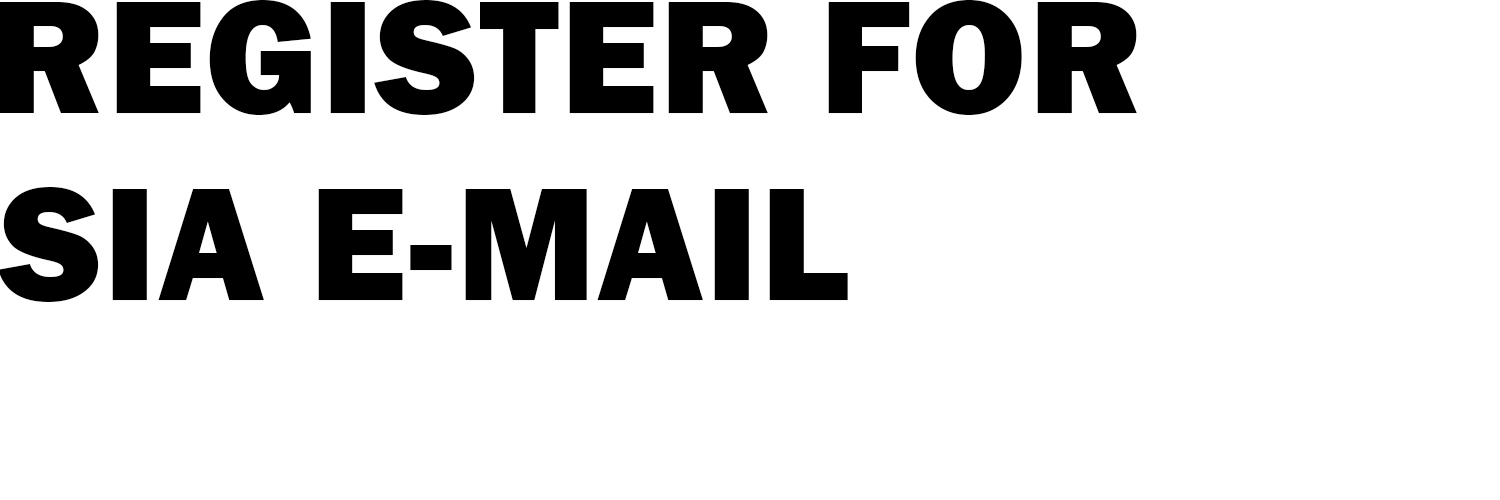Vogel Prize 2003 – Richard Veit

2003 Robert M. Vogel Prize Winner – Richard Veit (right) with Pat Martin (left) Photograph by Perry Green
This year’s prize committee was chaired by Bob Frame, and Pat Martin made the following presentation prepared by Mr. Frame:
“This presentation in 2003 marks the second year of the “Robert M. Vogel Prize,” in which the original Norton Prize was re-christened in honor of Robert M. Vogel, who has done so much for industrial archeology and for this organization.
“The Vogel Prize recognizes “the outstanding scholarly article in the Society’s journal, IA, over the past three years,” just as the first Norton Prize announcement put it.
“The Prize committee members serve rotating five-year terms, with the chair rotating off the committee after the selection process is complete. Let us acknowledge the committee members, whose commitment to this difficult task has been impressive and very good-natured. They are
Bob Frame, committee chair
Tim Tumberg, incoming chair for 2004
Larry Gross
Rick Greenwood
“It is worth noting that one member of the committee, Larry Gross, received the very first Norton Prize in 1982 for his article: “The Importance of Research Outside the Library: Watkins Mill, A Case Study.” Larry’s piece is worth noting because it set the standard for prize selection ever since, and the IA essence of that standard is captured in his title: “The Importance of Research Outside the Library.”
“Here’s how it works. The committee looks for a clearly stated thesis, a well-constructed narrative, an understandable conclusion, high-quality illustrations, and—this is significant—an effective analysis of material culture. After discussion and deliberation, the committee is pleased to announce the winner of the 2003 Vogel Prize:
Richard Veit’s “Moving Beyond the Factory Gates: The Industrial Archeology of New Jersey’s Terra Cotta Industry,” published in IA Vol. 25, No. 2 (1999), pp. 5-28.
“In his article, Richard Veit deals with the use of an industrial product, architectural terra cotta—a building material—and the industrial process that created it. His story begins with the raw material, Cretaceous clay, which is found in a broad swath across central New Jersey known as the Clay District, centered around the city of Perth Amboy. It is happens that 12 miles from Perth Amboy, by boat, is Manhattan, site of countless buildings using the Clay District’s terra cotta output between the 1870s and 1930s. Thus does Veit trace the journey of this humble substance, clay—from its mining to its monumental final use in, among other things, the 750-foot white terra cotta Woolworth Building.
“In the course of working this out, we learn of the production process at New Jersey’s many terra cotta factories, all now gone. We also learn of the factory workers in this technologically straightforward and labor-intensive industry. The terra cotta workers came from the region’s largely immigrant population, which consumed one of the industry’s more unusual products: the terra cotta gravemarker. The terra cotta gravemarker is the artifact that first piqued Veit’s interest. The poorer citizens of the Clay District knew what Manhattan’s architects learned, that terra cotta could be an inexpensive alternative to stone. From their native clay, they produced a wide range of creative and colorful markers for their cemeteries, providing Veit with artifacts that he studied from many angles.
“All together, Veit offers us a complex picture of a simple material from an industrial archeological perspective. He provides multi-dimensional analysis using wide-ranging resources, the most significant of which truly exemplify “the importance of research outside the library.”
Mr Martin invited Mr. Veit to come forward to receive the cash award. The physical award is a wooden foundry pattern with a plaque engraved with his name and the title “The Robert M. Vogel Prize.”

